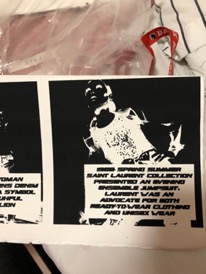By Ilayda Celik-Reese
This series is a depiction of traditional belly dance and belly dance wear in the context of modern society. In his piece ”The Work of Art in the Age of Its Technological Reproducibility,” Walter Benjamin states that ”the uniqueness of a work of art is identical to its embeddedness in the context of tradition.” Although the true origin of the dance is unknown, researchers have traced it back to both Egypt and Turkey, which is where the artist’s family is from. The artist’s family are in fact the subjects of this series, along with other members of the Fort Lauderdale Turkish Association and the artist herself. The subjects have been captured in the midst of a celebratory dance, in which some of them adorned themselves with handkerchiefs and coin skirts, while the majority dance without such decorations. The dance is the most significant part of the tradition, especially in this modern era, thus, most non-professionals dance without the proper adornments.
The history of belly dance or Rakkas, as it is called in Turkish, is mainly that of legend. In Andrea Deagon’s piece for Habibi Magazine she discusses the origins of belly dance in the Middle East. Deagon asserts that the history is quite muddled and mainly that of legend, as many have said it originated in the harems of sultans, others believe it was a birthing ritual or a dance for the goddess Isis. Later in his piece, Benjamin asserts that “The unique value of the ‘authentic’ work of art has always had its basis in ritual.” As belly dancing has come into the modern era it has lost some of its traditional formal aspects but has remained significant as a symbol of Middle Eastern culture, which is why it is often fetishized by western cultures. Belly dance, in the modern Western world, is most often treated as a white woman’s weekend hobby or something that would be shown at a Middle Eastern restaurant. Thus, in this piece the author sought to demonstrate what the dance means to the people who have known the dances since they could walk.
The primary purpose of traditional belly dance attire was to emphasize the movement of the body. The most well-known garment of the tradition is the “Bedlah,” which is the two-piece decorated bra and skirt set, often accompanied by a veil or handkerchief. The Bedlah is always adorned with some sort of small details that show movement, ranging from coins to small hand-knit pieces. This costume is the origin of the coin skirt. As time passed and belly dance became less formal, so did the costumes. Thus, the Bedlah eventually was toned down into just a hip scarf adorned with coins and a handkerchief if the dancer chooses.
The artist’s choice in this topic was influenced by her discovery of Youssef Nabil’s video art piece which centers on Salma Hayek as a belly dancer. In finding this work of art, the artist realized a whole new world had opened up for belly dance. Since the tradition had become established as an icon of Middle Eastern culture, it now had the opportunity to achieve new meanings through its incorporation into modern art. Thus, the artist’s exploration into this subject was not only to depict the historical evolution of the belly dance tradition, but also to explore potential future meanings of belly dance.






























